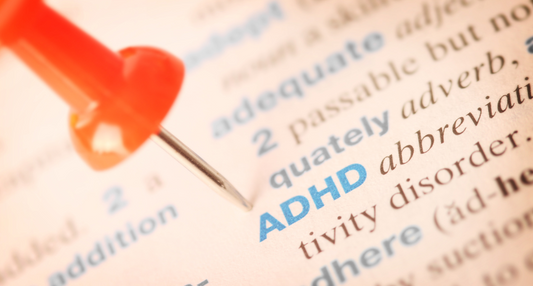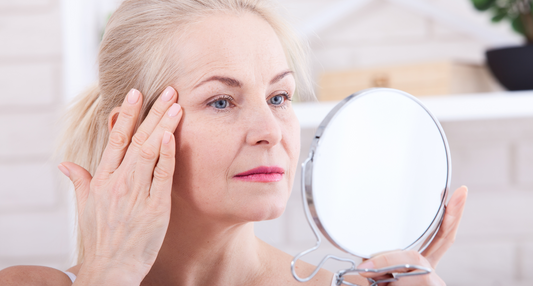Is It Perimenopause? Or Something Else?

Share
No two women are alike, and everyone experiences perimenopause a little differently. Some women endure severe symptoms for years, while others transition to menopause much more easily. Unfortunately, there isn’t a simple test to determine when a woman begins perimenopause, so you and your healthcare provider will need to do a little investigative work.
For most women in their 30s and 40s, irregular periods, hot flashes, or mood differences indicate perimenopause has begun. But, many symptoms of perimenopause are also symptoms of more serious medical conditions. How do you know the difference? It can be tricky, so I’m here to help with tips for decoding this stage of life.
What Is Perimenopause?
Perimenopause is the period of time when your ovaries produce less estrogen and your body transitions to menopause. It can begin as early as your mid 30s and can last up to 10 years. During this time, estrogen levels fluctuate up and down, often erratically, which causes symptoms like irregular periods, hot flashes, insomnia, weight gain, increased belly fat, hair changes, memory loss, vaginal problems, bladder problems, mood shifts, sexual dysfunction, cholesterol-level changes, increased urination, and muscle or joint aches.
How Is Perimenopause Diagnosed?
There is not an easy test to determine when women are in perimenopause. Diagnosing menopause is easy because when your periods stop for at least 12 months, it’s menopause. Perimenopause is not so simple, and many healthcare providers have a difficult time making a diagnosis.
“Perimenopause is often diagnosed by symptoms alone. There is not a perfect “blood test” to determine if a woman is in perimenopause due to the widely fluctuating hormone levels.”
– Dr. Mary Claire Haver
Since There Is No Diagnostic Test For Perimenopause…How Do You Know?
Perimenopause is often determined through a discussion of symptoms and menstrual history with your healthcare provider, and ruling out other more serious conditions.
Where are you in your
menopause journey?
Take Our Quiz
Symptoms That Could Be Perimenopause (But Might Be Something Else)
It’s confusing. If you are experiencing any of these symptoms, it is important to see your healthcare provider.
Menstrual Changes
Having periods that are lighter or heavier, or occur more frequently or less frequently than usual, is the most common symptom of perimenopause.
What else could it be? Irregular bleeding can be a sign of an illness or infection, uterine fibroids, pregnancy complication, endometrial polyps, cervical cancer, or uterine cancer.
Hot Flashes Or Hair Loss
Decreases in the amount of estrogen produced by the ovaries can cause hot flashes, night sweats, hair loss, or thinning hair.
What else could it be? Hot flashes and hair loss can be caused by an overactive thyroid (hyperthyroidism).
Weight Gain Or Fatigue
Declining estrogen levels contribute to weight gain, including increased belly fat, and an overall feeling of fatigue and tiredness.
What else could it be? These symptoms can also be caused by an underactive thyroid (hypothyroidism).
Body Aches And Joint Pain
Many women in perimenopause suffer from widespread body aches, muscle aches, and pain in the joints.
What else could it be? It is important to rule out other causes like arthritis, fibromyalgia, and depression.
Mood Changes
Fluctuating hormone levels during perimenopause contribute to anxiety, irritability, and feelings of depression.
What else could it be? Anxiety and depression may be unrelated to perimenopause, and you should have a thorough mental-health evaluation.
Insomnia
Difficulty falling asleep or staying asleep is common when you are experiencing hormonal changes.
What else could it be? If you are struggling with sleep for more than a couple of weeks, you should be evaluated for a sleep disorder like sleep apnea.
Vaginal Changes Or Sexual Dysfunction
As estrogen levels decline, the vaginal tissue becomes thinner and may tear, causing pain during intercourse. Many women in perimenopause also experience a decrease in libido.
What else could it be? Sexual dysfunction can be caused by many different factors, both physical and mental/emotional. Speak with your healthcare provider to get to the root of the problem.
It’s Perimenopause. Now What?
When you and your healthcare provider have ruled out other medical conditions and make a diagnosis of perimenopause, you can start to improve your symptoms and enjoy a better quality of life.
Small changes can make a big difference in how you feel and in your overall health. Possible treatments for perimenopause include changing your eating habits and following an anti-inflammatory diet, increasing your intake of fiber and other vitamins and minerals, taking supplements, or hormone therapy.
The science-based Galveston Diet is a great place to start.










